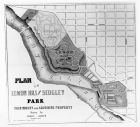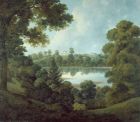Difference between revisions of "Lemon Hill"
[http://www.nga.gov/content/ngaweb/research/casva/research-projects.html A Project of the National Gallery of Art, Center for Advanced Study in the Visual Arts ]
Emily Pugh (talk | contribs) |
Emily Pugh (talk | contribs) |
||
| Line 1: | Line 1: | ||
http://en.wikipedia.org/wiki/Lemon_Hill | http://en.wikipedia.org/wiki/Lemon_Hill | ||
| − | '''Site | + | '''Site Dates:''' |
'''Site Owner(s):'''<br/> | '''Site Owner(s):'''<br/> | ||
| Line 7: | Line 7: | ||
Henry Pratt (dates)<br/> | Henry Pratt (dates)<br/> | ||
| − | '''Site | + | '''Site Designer(s):''' |
'''Alternate Names:''' The Hills | '''Alternate Names:''' The Hills | ||
Revision as of 18:39, April 18, 2012
http://en.wikipedia.org/wiki/Lemon_Hill
Site Dates:
Site Owner(s):
Robert Morris (dates)
Henry Pratt (dates)
Site Designer(s):
Alternate Names: The Hills
Associated Sites: Belmont (Pennsylvannia), Clermont, Fairmont
Location:
Philadelphia, PA
View on Google maps
Images
Frederick Graff, "Plan of Lemon Hill and Sedgley Park, Fairmount and Adjoining Property" (October 15, 1851); Fairmount Park; Library Company of Philadelphia, Philadelphia, PA
William Groombridge, View of Lemon Hill (c. 1800); Schwarz Gallery, Philadelphia, PA; painting
Bibliography
- Beebe, Lewis. Historical Society of Pennsylvania, Journal of Lewis Beebe, 1799-1801, vol. 3
- Mr. Pratts garden for beauty and elegance exceeds all that I ever saw—The main alley, 13 feet wide, and 20 rods long is upon each side graced with flowers of every kind and colours—and 18 wide. An alley of 13 feet wide runs the length of the garden thro’ the centre—Two others of 10 feet wide equally distant run parallel with the main alley. These are intersected at right angles by 4 other alleys of 8 feet wide—Another alley of 5 feet wide goes around the whole garden, leaving a border around it of 3 feet wide . . . next to the pales. . . . The border of the main alley is ornamented with flowers of every description.
- Beebe, Lewis. From Martin, Peter. 1991. The Pleasure Gardens of Virginia: From Jamestown to Jefferson. Princeton, N.J.: Princeton University Press: 113.
- An ally of 13 feet wide runs the length of the garden thro’ the centre—. Two others of 10 feet wide equally distant run parallel with the main alley. These are intersected at right angles, by 4 other alleys of 8 feet wide—Another alley of 5 feet wide goes around the whole garden, leaving a border of 3 feet wide next to the pales. This lays the garden into 20 squares, each square has a border around it of 3 feet wide. The border of the main alley, is ornamented with flowers of every description. Likewise the border of every square, is decorated with pinks and a thousand other flowers, which it [is] impossible for me to describe. The remaining part of each square, within the border, is planted with beans, pease, cabbage, onions, Beets, carrots, Parsnips, Lettuce, Radishes, Strawberries, cucumbers, Potatoes, and many other articles. . . . Within the pales, on the out border, one planted, Quince, snowball, Laylock, and various other small trees, producing the most beautiful flowers.
- Committee of the Pennsylvania Horticultural Society. From Boyd, James. 1929. A History of the Pennsylvania Horticultural Society, 1827-1927. Philadelphia: Pennsylvania Horticultural Society, 432.
- There are some pretty bowers, summer houses, grottos and fish ponds in this garden—the latter well stored with gold and silver fish.
- Committee of the Pennsylvania Horticultural Society. From Boyd, James. 1929. A History of the Pennsylvania Horticultural Society, 1827-1927. Philadelphia: Pennsylvania Horticultural Society, 432.
- The treasures contained in the hot and green houses are numerous. Besides a very fine collection of Orange, Lemon, Lime, Citron, Shaddock, Bergamot, Pomgranate and Fig trees in excellent condition and full of fruit, we notice with admiration the many thousand of exotics to which Mr. Pratt is annually adding. The most conspicuous among these, are the tea tree; the coffee tree—loaded with fruit; the sugar cane; the pepper tree; Banana, Plantain, Guva, Cherimona, Ficus, Mango, the Cacti in great splendour, some 14 feet high, and a gigantic Euphorbia Trigonia—19 years old, and 13 feet high. The green houses are 220 feet long by 16 broad; exhibiting the finest range of glass for the preservation of plants, on this continent.
- Colonel Perkins, near Boston, has it is true, a grapery and peach Espalier, protected by 330 feet of glass, yet as there are neither flues not foreign plants in them, they cannot properly be called green houses, whereas Mr. Pratt’s are furnished with the rarest productions of every clime, so that the committee place the conservatory of Lemon Hill at the very head of all similar establishments in this country.
- Downing, A. J. [Andrew Jackson]. 1849. A Treatise on the Theory and Practice of Landscape Gardening... 4th ed. New York: G. P. Putnam: 42-44[1]
- The seat of the late Judge Peters, about five miles from Philadelphia, was, 30 years ago, a noted specimen of the ancient school of landscape gardening. . . . Long and stately avenues, with vistas terminated by obelisks, a garden adorned with marble vases, busts, and statues, and pleasure grounds filled with the rarest trees and shrubs, were conspicuous features here. . . .
- Lemon Hill, half a mile above the Fairmount waterworks of Philadelphia, was, 20 years ago, the most perfect specimen of the geometric mode in America, and since its destruction by the extension of the city, a few years since, there is nothing comparable with it, in that style, among us. All the symmetry, uniformity, and high art of the old school, were displayed here in artificial plantations, formal gardens with trellises, grottoes, spring-houses, temples, statues, and vases, with numerous ponds of water, jets-d’eau, and other water-works, parterres and an extensive range of hothouses. The effect of this garden was brilliant and striking; its position, on the lovely banks of the Schuylkill, admirable; and its liberal proprietor, Mr. Pratt, by opening it freely to the public, greatly increased the popular taste in the neighborhood of that city.
- On the Hudson, the show place of the last age was the still interesting Clermont, then the residence of Chancellor Livingston. Its level or gently undulating lawn, four or five miles in length, the rich native woods, and the long vistas of planted avenues, added to its fine water view, rendered this a noble place. The mansion, the greenhouses, and the gardens, show something of the French taste in design, which Mr. Livingston’s residence abroad, at the time when that mode was popular, no doubt, led him to adopt. . . .
- Judge Peters’ seat, Lemon Hill, and Clermont, were [the best specimens] of the ancient style, in the earliest period of the history of Landscape Gardening among us.
- Loudon, J. C. From Loudon, J. C. (John Claudius). 1850. An Encyclopaedia of Gardening; Comprising the Theory and Practice of Horticulture, Floriculture, Arboriculture, and Landscape-Gardening. 4th ed. London: Longman et al.: 331.
- 850. Lemon Hill, near Philadelphia. . . . [Downing observes:] ‘. . . An extensive range of hothouses, curious grottoes and spring-houses, as well as every other gardenesque structure, gave variety and interest to this celebrated spot, which we regret the rapidly extending trees, and the mania for improvement there, as in some of our other cities, have now nearly destroyed and obliterated.’ (Downing’s Landscape Gardening adapted to North America.)
- Wailes, Benjamin L.C. From Moore, John Hebron. 1954. “A View of Philadelphia in 1829: Selections from the Journal of B.L.C. Wailes of Natchez.” Pennsylvania Magazine of History and Biography 78 (July): 359.
- But the most enchanting prospect is towards the grand pleasure grove & green house of a Mr. Prat[t], a gentleman of fortune, and to this we next proceeded by a circutous rout [sic], passing in view of the fish ponds, bowers, rustic retreats, summer houses, fountains, grotto, &c., &c. The grotto is dug in a bank [and] is of a circular form, the side built up of rock and arched over head, and a number of Shells [?]. A dog of natural size carved out of marble sits just within the entrance, the guardian of the place. A narrow aperture lined with a hedge of arbor vitae leads to it. Next is a round fish pond with a small fountain playing in the pond. An Oval & several oblong fish ponds of larger size follow, & between the two last is an artificial cascade. Several summer houses in rustic style are made by nailing bark on the outside & thaching the roof. There is also a rustic seat built in the branches of a tree, & to which a flight of steps ascend. In one of the summer houses is a Spring with seats arrond it. The houses are all embelished [sic] with marble busts of Venus, Appollo, Diana and a Bacanti. One sits on an Island on the fish pond. All the ponds filled with handsome coloured fish.
- Watson, Joshua Rowley. From Foster, Kathleen A. 1997. Captain Watson’s Travels in America: The Sketchbooks and Diary of Joshua Rowley Watson, 1772-1818. Philadelphia: University of Pennsylvania Press, 299.
- We drove over the Upper Bridge to Mr Pratts who has a large collection of plants and extensive Greenhouses & ca. His grounds are too much after the French manner of pleasure gardens.
Notes
- ↑ Downing, A. J. [Andrew Jackson]. A Treatise on the Theory and Practice of Landscape Gardening, Adapted to North America;... 4th ed. Washington, D.C.: Dumbarton Oaks Research Library and Collection, 1849.



